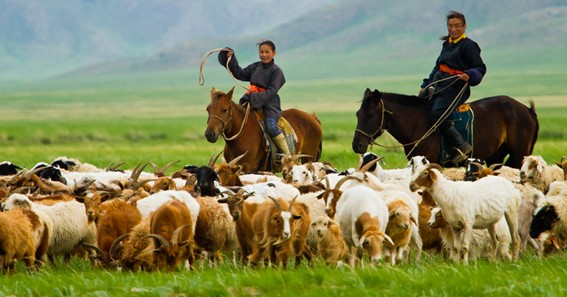Are you curious to know what is nomadic herding? You have come to the right place as I am going to tell you everything about nomadic herding in a very simple explanation. Without further discussion let’s begin to know what is nomadic herding?
What Is Nomadic Herding?
Nomadic herding, a way of life deeply rooted in ancient traditions, embodies a symbiotic relationship between humans and animals. It is a lifestyle characterized by the constant movement of pastoral communities in search of grazing lands for their livestock. In this blog, we will embark on a journey to understand the essence of nomadic herding, its historical significance, cultural implications, and the challenges faced by these resilient communities.
Nomadic Herding: A Way Of Life
Nomadic herding, also known as pastoralism, involves the rearing of livestock, such as sheep, goats, cattle, or camels, by communities who depend on their animals for sustenance and livelihood. These communities, often referred to as nomads or pastoralists, migrate seasonally in search of fresh pastures, water sources, and favorable climates for their herds. This movement is driven by the need to ensure the well-being and survival of their animals.
Historical Significance:
Nomadic herding has deep historical roots, dating back thousands of years. In various regions around the world, nomadic pastoralists have shaped cultures, traditions, and economies. Nomads have played a crucial role in facilitating trade and cultural exchange, serving as conduits between settled communities.
Cultural Significance And Lifestyle:
- Adaptability and Resilience: Nomadic herding requires a deep understanding of the environment and the ability to adapt to changing conditions. These communities have developed intricate knowledge of migration routes, weather patterns, and forage availability, enabling them to sustain their animals and their way of life.
- Strong Bond with Animals: Nomadic pastoralists have a profound connection with their livestock. Animals provide them with milk, meat, wool, hides, and transportation. They are integral to their cultural identity and are often regarded as a valuable source of wealth.
- Nomadic Architecture: The dwellings of nomadic pastoralists are portable and designed to accommodate their mobile lifestyle. Tents, yurts, or similar structures made from materials readily available in the environment serve as their homes during their journeys.
Challenges Faced By Nomadic Herding Communities:
- Modernization and Encroachment: The encroachment of settled communities, industrialization, and urbanization have disrupted traditional migration routes and access to grazing lands, limiting the ability of nomadic pastoralists to sustain their herds.
- Climate Change: Changing climatic patterns, including droughts, desertification, and unpredictable weather, pose significant challenges to nomadic herding communities. These environmental shifts can lead to the depletion of grazing lands, scarcity of water, and loss of livestock.
- Socio-Economic Pressures: Economic transformations and the allure of urban lifestyles have led to the gradual erosion of nomadic herding as a viable means of livelihood. Younger generations are often drawn to education and employment opportunities outside the traditional pastoral lifestyle.
Preserving Nomadic Herding And Sustainable Solutions:
- Recognition and Protection: Governments and international organizations can play a crucial role in recognizing the cultural and ecological significance of nomadic herding and enacting policies to protect the rights and resources of nomadic communities.
- Sustainable Rangeland Management: Collaboration between nomadic herders, scientists, and policymakers can promote sustainable rangeland management practices. This includes implementing rotational grazing systems, conserving water sources, and restoring degraded lands to ensure the long-term viability of nomadic herding.
- Education and Empowerment: Providing educational opportunities that blend traditional knowledge with modern skills can empower nomadic communities to navigate contemporary challenges while preserving their cultural heritage.
Conclusion:
Nomadic herding embodies a unique way of life, reflecting the harmony between humans, animals, and the environment. It is a testament to human adaptability and resilience. While nomadic herding faces numerous challenges in a rapidly changing world, efforts to recognize, protect, and sustain this way of life are crucial. By valuing and preserving nomadic herding, we honor the diversity of human cultures and ensure the continuity of a sustainable and interconnected world.
FAQ
What Is Nomadic Herding In Class 8?
Nomadic herding is a type of primitive subsistence farming. Nomads are people who travel from one place to another. The migration from one region to another to escape intense climates is known as nomadic herding.
Why Is Nomadic Herding?
The main reason for the nomadic herding of the nomads was to find fresh pastures for their pets. Nomads move from south to north in summer and from north to south in winter in the tundra region. It is also known as pastoral nomadism.
What Is Nomadic Herding 5 Points?
(a) Nomadic herding or pastoral nomadism is a primitive subsistence activity. (b) In this activity the herders rely on animals for food, clothing, shelter, tools and transport. (c) The nomadic herders move from one place to another along with their livestock, depending on the amount and quality of pastures and water.
What Is Nomadic Herding 3 Points?
Nomadic herding is also called pastoral nomadism. It is basically primitive subsistence activity in which herders depend upon animals for food, clothing, shelter, tools and transport.
I Have Covered All The Following Queries And Topics In The Above Article
Nomadic Herding Farming
Nomadic Herding Is Practised In Which Region
Nomadic Herding Example
Is Nomadic Herding Intensive Or Extensive
Advantages Of Nomadic Herding
What Is Nomadic Farming
Herding Synonym
What Does Nomadic Herding Produce
What Is Nomadic Herding
What is the characteristics of nomadic herding
What is nomadic herding agriculture?
